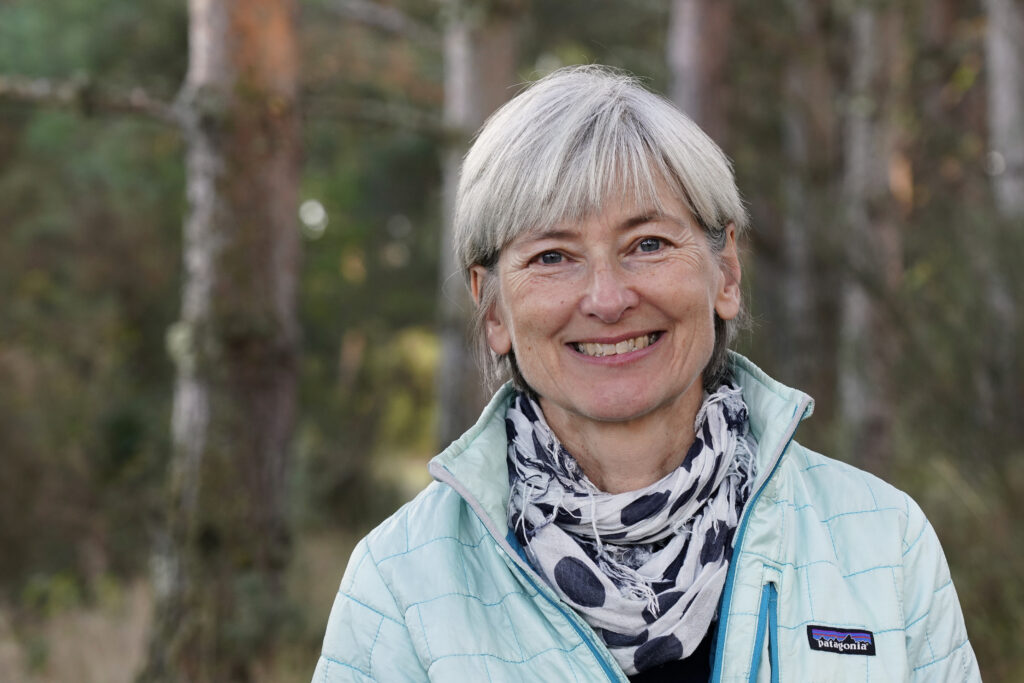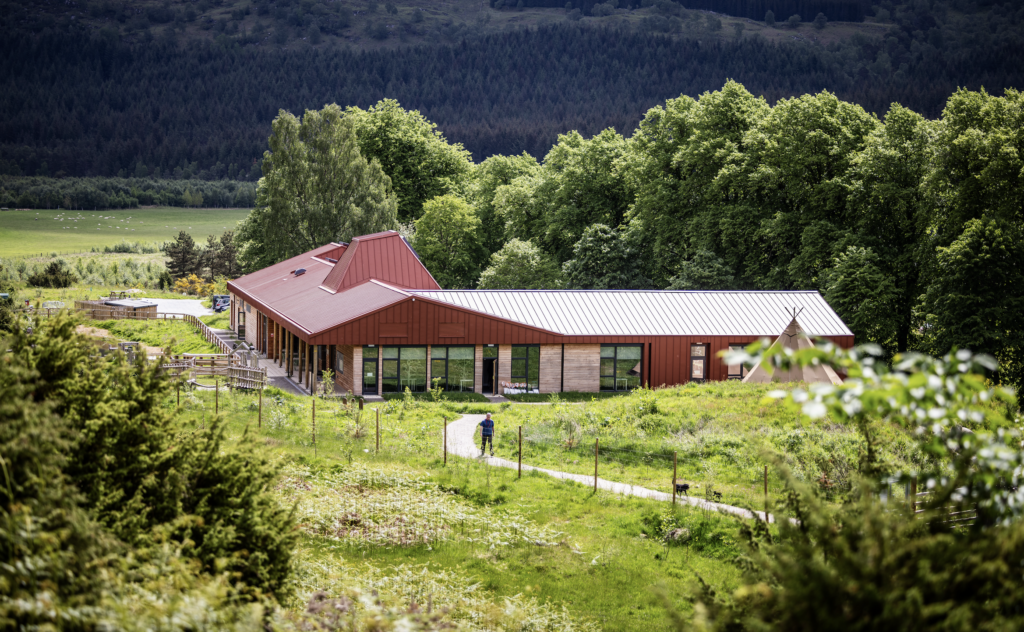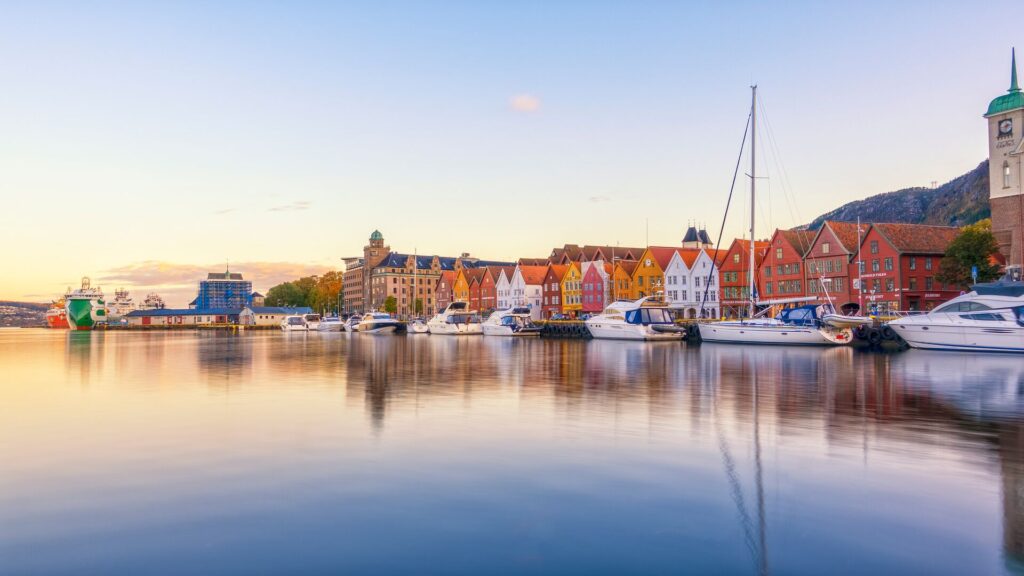Root Cause: How We’re Rewilding Scotland One Tree at a Time
Home to some of the world’s most beautiful landscapes, Scotland’s allure lies not only in its stunning scenery but also in its rich ecological heritage. However, you may be surprised to hear Scotland is also one of the most nature-depleted countries in the world. Giving nature a helping hand in Scotland, Trees for Life is an award-winning environmental charity which stands at the forefront of rewilding in the Scottish Highlands. Aiming to support biodiversity and restore natural processes, their work involves landscape-scale nature restoration, protecting and expanding fragments of the Caledonian forest through tree planting and natural regeneration, returning missing animals, and involving people in rewilding.
To learn more about Trees for Life, a MAKE TRAVEL MATTER® Experience on our Scenic Scotland premium tour and a TreadRight Foundation grant recipient, we spoke to their Partnerships Manager Sarah Kent. She explains more about their aims and projects, why rewilding is so important to Scotland, and how you can get involved.

It’s a gift to work on such a vital project
“My journey with Trees for Life began eight years ago at their nursery at Dundreggan Estate, which provided an excellent introduction to the ecological issues in the Highlands,” Sarah says. “Growing up here in the Scottish Highlands, then working for many years in London, I became acutely aware of the fractured relationship between people and nature while pursuing my master’s degree. My early career involved projects aimed at creating spaces for nature in deprived urban areas.
“In 2016 I moved back to the Highlands, and as the Partnerships Manager for Trusts and Foundations within the fundraising team at Trees for Life, I help secure grants for the project teams. It feels like a gift to work on such a vital project during these significantly challenging times.”
A clear vision for Scotland’s future
“I have learned so many surprising things since joining Trees for Life, but the one that truly blew my mind goes back to my early days,” Sarah tells us. “I learned that Scotland was once completely covered in forest – something that’s hard to imagine now. I’m so accustomed to the mountain landscapes in Scotland, which are largely devoid of trees. Examining ancient maps which show a widely forested landscape was mind-blowing but also shows what could be possible if we achieve our nature restoration goals.
“At Trees for Life our future vision for Scotland’s landscape is to support nature, people and climate through rewilding. By giving nature a helping hand, our long-term vision is to create a landscape featuring a healthy cluster of connected habitats. This will include a mosaic of forest habitats, wetlands, peatlands, bogs, lochs and rivers, all abundant with natural processes that support biodiversity.”
The Dundreggan Rewilding Centre
Since purchasing Dundreggan, a 10,000-acre former deer stalking estate, in 2008, Trees for Life has been rewilding this important area of the Scottish Highlands. In April 2023, they opened the world’s first rewilding center, a 7-million-pound investment into the local economy and rewilding.
“Dundreggan is a beautiful estate, with a lot of history and folklore; it’s a place that goes back hundreds of years in time,” Sarah tells us. “The Dundreggan Rewilding Center was opened with the desire to invite many more people onto the estate to connect with nature, engage with rewilding and learn about Scotland’s rich natural and cultural heritage. Dundreggan is also home to a nursery for rare and endangered native tree species. Here we also cultivate seed from montane tree species that have nearly vanished from Britain, Scotland and parts of Europe. The nursery not only grows these trees but also conducts vital research.”

Rewilding Scotland, step by step
Dundreggan’s renowned on-site tree nursery cultivates over 80,000 trees annually, including Scots pine, holly, oak, and rare mountain species like dwarf birch and woolly willow. Each tree is grown from seed, ready for planting on the estate and other rewilding sites. Trees for Life has successfully encouraged the rare but ecologically important aspen tree to flower under controlled conditions – enabling it to produce much-needed seeds that can be used for propagation.
“At the Dundreggan nursery, after seeds are collected and cultivated into seedlings approximately 20-30 centimeters high, they are returned to suitable landscapes for planting,” Sarah says.” Our goal is not merely to create a forest but to establish a seed source; the trees are strategically placed to begin providing new seeds, typically within large, deer-proof enclosures.
“However, growing a forest this way is challenging and costly. We would prefer to see populations of grazing animals like deer reduced to a sustainable level and we are collaborating with landowners to achieve this. In the meantime, fenced enclosures help to enhance forest growth and connectivity.”
Why Scotland’s tree species are declining
“The decline of these tree species is largely due to land management practices that have persisted for hundreds of years,” Sarah explains. “Much of Scotland has been divided into estates where grazing animals have proliferated, quickly pushing out native forests.
“For instance, you might encounter a solitary, centuries-old pine tree in a stunning yet barren highland landscape. Known as a “granny pine,” it has been seeding for 200 to 300 years. Without grazing pressure, it would be surrounded by numerous trees, but each seedling becomes food for hungry animals, leaving it standing alone. For centuries Scotland’s trees have struggled to survive because of grazing pressure, but we seek to restore balance to allow native woodlands to thrive.”
Climate Change challenges
“Climate change is a significant and steep learning curve. There are various climate threats, including more intense weather events, such as extreme rainfall. Imagine a mountainous landscape devoid of trees and shrubs; those soils will be unstable, leading to more landslides and water sheeting into river catchments, causing downstream flooding.
“Conversely, mountain landscapes covered in healthy vegetation with robust root systems help to stabilize soils, allowing more rainwater to be absorbed in river catchments and reducing the risk of inundating rivers and downstream settlements. Nature restoration is a vital tool in building climate resilience and flooding is a major issue, prompting many to rapidly rethink their approaches. Engineered flood defenses are costly to implement and upstream nature restoration can play an essential role in increasing their effectiveness.
“Another significant impact we’re witnessing in Scotland is wildfires. In areas where moisture is scarce, the risk of fire increases, and blazes can spread rapidly through landscapes that are lacking in healthy peatlands and bogs.”
The Insight experience
Guests on our Scenic Scotland premium tour and Scenic Scotland, A Women-Only Tour, will have the opportunity to visit the Dundreggan Rewilding Center for themselves, on a MAKE TRAVEL MATTER® Experience. Under the guidance of aconservation expert, you’ll learn about the ecology of the Highlands and the work of Trees for Life on this beautiful estate.
“The Rewilding Center features an extensive exhibition that guides you through the building, helping you explore and understand rewilding,” says Sarah. “There’s also a network of well-marked trails suitable for all abilities and a friendly café that serves delicious food – I highly recommend the sausage rolls, the salads and the cakes!”
With all MAKE TRAVEL MATTER® Experiences aligned to the United Nations Sustainable Development Goals, your visit directly benefits Trees for Life and supports UN SDG 13, Climate Action.
The TreadRight Partnership – supporting the Wild Pine Project
Trees for Life is also supported by The Travel Corporation’s not-for-profit TreadRight Foundation, funded through monies generated by Insight Vacations and our sister brands.
“The support of TreadRight has been very significant,” Sarah tells us. “The Foundation has been instrumental in funding our Wild Pine Project, identifying and mapping ancient Scots pine sites that are not yet officially recognized, so they can become targets for restoration action.
“The Wild Pine project emerged from another project, the Caledonian Pinewood Recovery initiative. At one time, much of Scotland would have been covered with a natural pinewood and all the associated species, but now there’s at most 2% of that left. These remaining woodlands are in isolated fragments, many in remote ravines where they can’t be reached by grazing animals. Our senior ecologist, James, mapped out and surveyed over 80 fragments, compiling a comprehensive report on their condition, significance and restoration recommendations.
“TreadRight has helped fund the Wild Pine Project, the second, vital stage,” she continues. “This is focused on very practical action on the ground, in terms of estates being able to carry out implementations that will protect these pinewoods and help them to grow and proliferate. This could mean putting in strategic fencing or adopting other measures to reduce herbivore impacts. The Wild Pine project also gives people a clear understanding of the importance of the pinewoods.”

Trees are living history
“My favorite spot at Dundreggan is the 600-year-old oak tree, on top of the fairy hill,” says Sarah. “You can sit there and read a book or have a picnic with a lovely view over the tree nursery and around the estate. This ancient tree has seen many changes: it will have been there through the Jacobite uprising, a landmark in Scottish history that ultimately changed the way lands are managed. And of course, it’s seen the latest changes, with Dundreggan becoming a place where everyone is welcomed to explore rewilding.”
“The tree is also catalyst for a flourishing ecosystem, and not just for everything that’s happens above ground. In a healthy ecosystem, you’ll find soils that are teeming with life, everything from mycorrhizal networks and microorganisms to earthworms and other invertebrates that that make soil this living, breathing organism and also give it that additional ability to store carbon.”
SAVE UP TO $2,000 PER COUPLE* ON YOUR FIRST PREMIUM TOUR.
Plus receive latest offers, travel inspiration, and discover how your travels will make a positive impact. Together, WE MAKE TRAVEL MATTER®. Subscribe NowMore than a day out
For those wishing for a more immersive experience, Dundreggan also offers comfortable accommodations for longer stays. Visitors can join tours and hands-on workshops led by experts or enjoy yoga retreats providing opportunities to fully immerse in this beautiful environment. Music events and activities celebrating rewilding and Gaelic culture are also regular features.
Over 4,000 species of plants and animals are found on the estate, including many rare and protected species. Golden eagles are regularly seen flying over along with ospreys, tawny owls, plus many woodland songbirds. The area is also home to Resident populations of water voles, otters and a huge wealth of invertebrate species.
How can I get involved?
“If you’re inspired by rewilding and want to get involved, there are numerous ways to help, no matter where you are in the world,” says Sarah. “As a charity, donations play a crucial role in our work; while we are funded by trusts and foundations like TreadRight and corporate partners, public donations are vital, enabling us to accomplish incredible rewilding work. We also offer volunteering experiences, including Rewilding Weeks that attract hundreds of volunteers each year. Another option is to join your local nature restoration group or community woodland as a volunteer.”
“We believe that everything starts at home, so you might consider rewilding your own garden, window box, or balcony to create space for nature. The Dundreggan Rewilding Center provides information on how to do this, emphasizing that making space for nature is one of the most important actions we can take.
“Ultimately, one of the most important things we can do, is to foster an equal partnership between people and nature.”
This Earth Day, and every day, discover more about how your travels with us leave a positive impact.
LIKED THIS POST? SHARE WITH YOUR COMMUNITY





